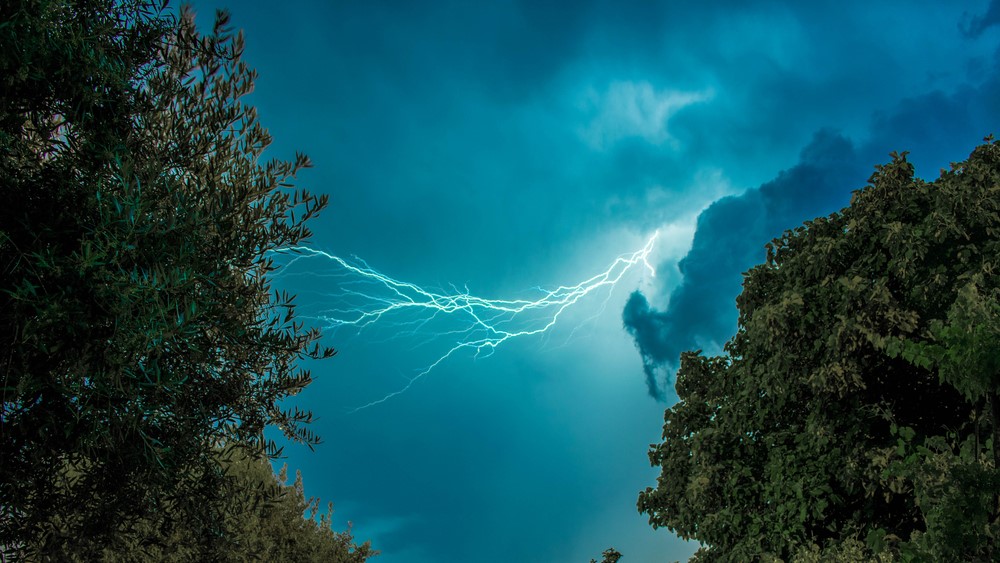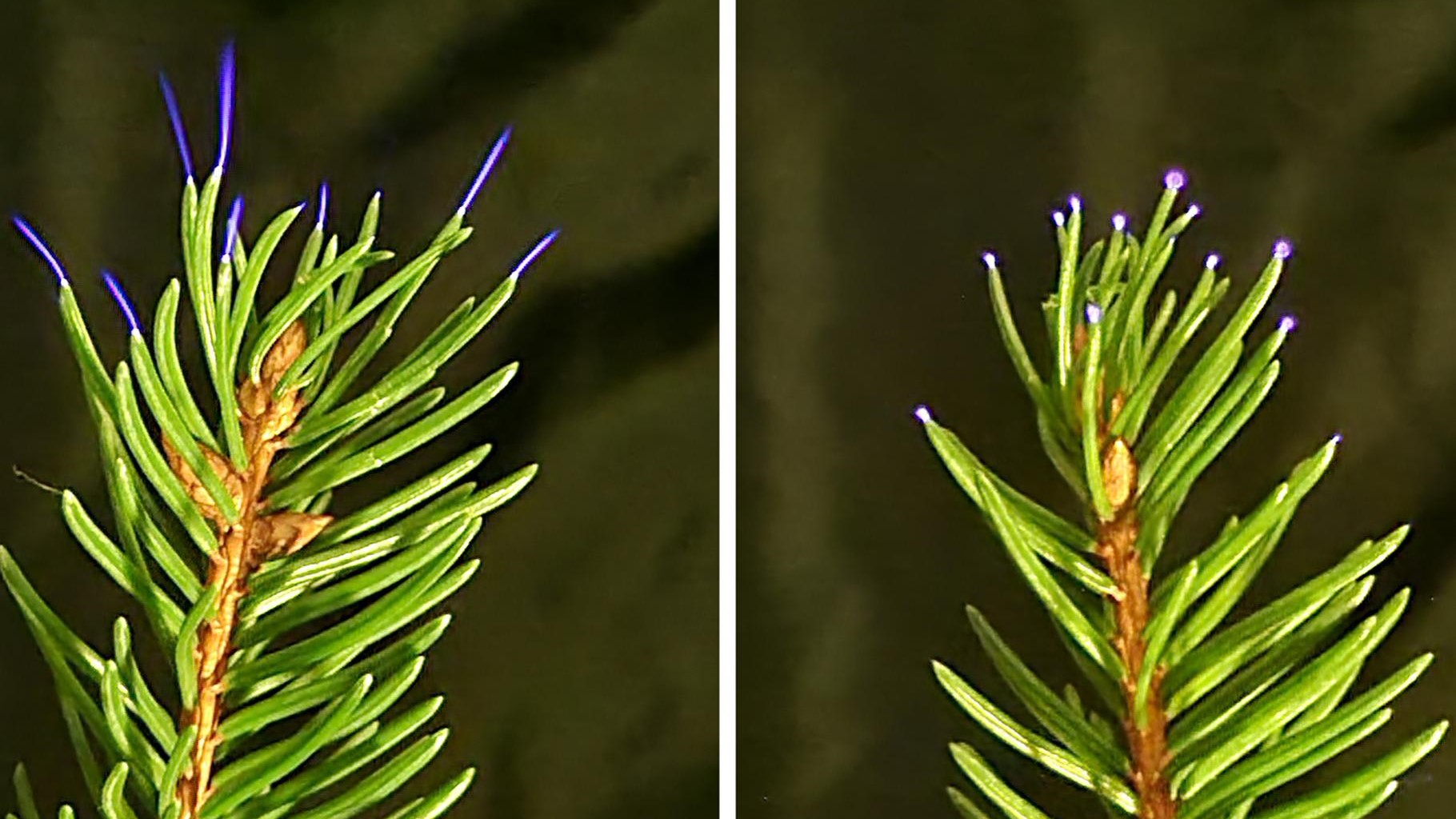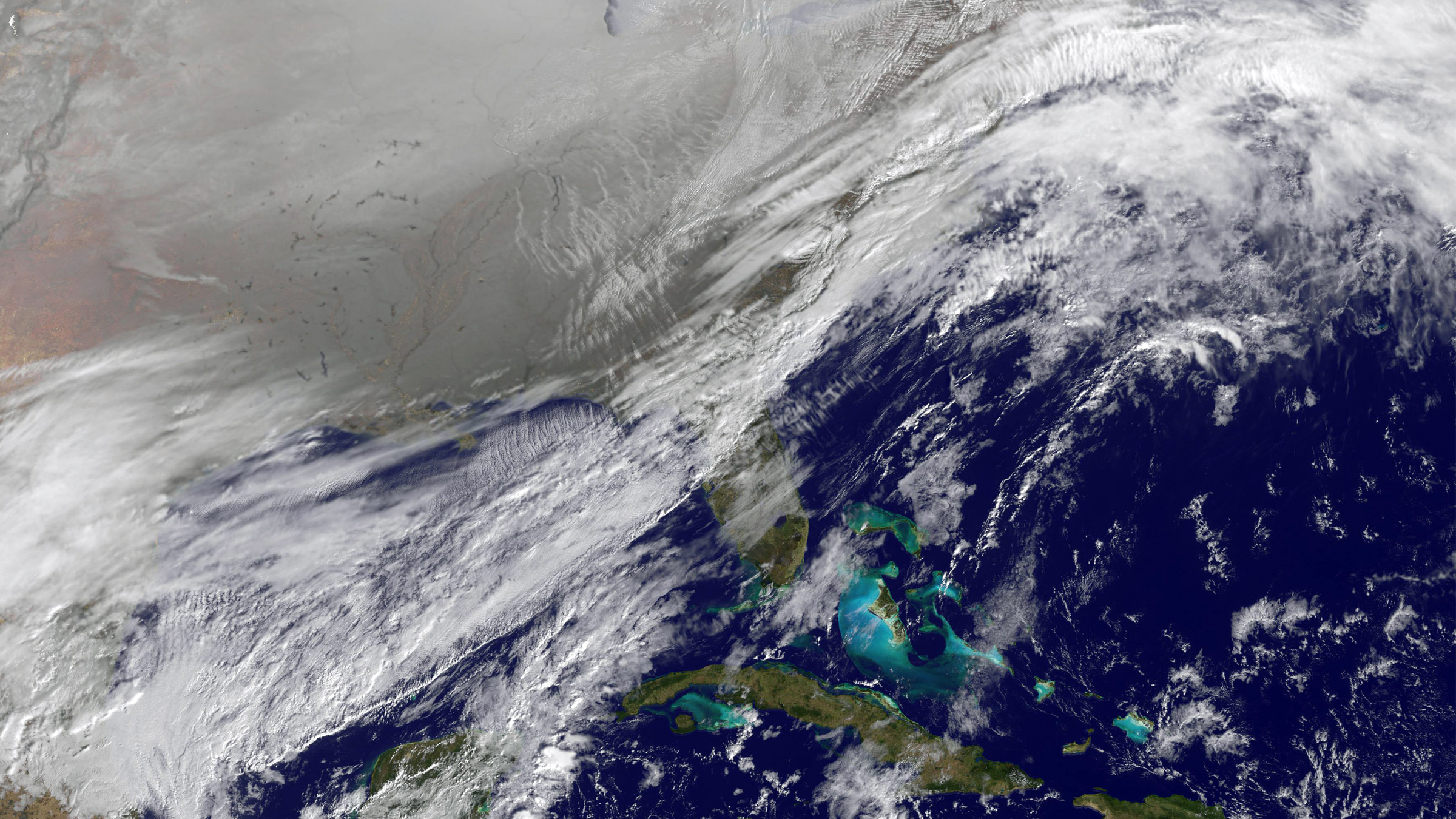Plant leaves spark with electricity during thunderstorms — and that could be altering our air quality in unpredictable ways
During thunderstorms, leaves from trees and other plants create mini electric discharges that can significantly alter the surrounding air quality. But researchers are unsure if this is beneficial or harmful.

When lightning flashes above, plants on the ground may respond in kind.
Scientists have long been aware that plants and trees can emit small, visible electric discharges from the tips of their leaves when the plants are trapped beneath the electrical fields generated by thunderstorms high overhead. These discharges, known as coronas, are sometimes visible as faint, blue sparks that glow around charged objects.
Now, new research suggests those plant-based sparks may be altering the surrounding air quality in ways never recognized before. But whether the impacts of these minishocks in the atmosphere are positive or negative remains unclear.
In the study, published Aug. 9 in the Journal of Geophysical Research: Atmospheres, researchers recreated the electrical fields from thunderstorms in a laboratory and analyzed the coronas given off by eight plant species under a range of conditions. The results showed that all of the coronas created a high abundance of radicals — chemicals containing unpaired electrons that are highly reactive with other compounds — which can significantly alter the surrounding air quality.
"While little is known about how widespread these discharges are, we estimate that coronas generated on trees under thunderstorms could have substantial impacts on the surrounding air," lead study author Jena Jenkins, an atmospheric scientist at Penn State University, said in a statement.
Related: 'Gigantic jet' that shot into space may be the most powerful lightning bolt ever detected
The two radicals given off by the plant coronas are hydroxyl (OH) and hydroperoxyl (HO2), both of which are negatively charged and are known to oxidize, or steal electrons from, a number of different chemical compounds, thereby transforming them into other molecules. The researchers were particularly interested in the concentrations of hydroxyl radicals because they have a greater impact on air quality.
Get the world’s most fascinating discoveries delivered straight to your inbox.
"The hydroxyl radical contributes to the total atmospheric oxidation of many atmospheric pollutants," study co-author William Brune, a meteorologist at Penn State University, said in the statement.
For example, if a hydroxyl radical reacts with greenhouse gases, such as methane, then it can remove the damaging molecules from the atmosphere and help combat climate change, Brune said. But if the same radical reacts with oxygen, it can create ozone, which, despite playing an important role in the upper atmosphere, is toxic to humans. The radicals can also create aerosol particles that harm air quality, he added.

This is not the first time that researchers have shown the link between thunderstorms and hydroxyl radicals.
In 2021, a research team led by Brune found that lightning was a major progenitor of hydroxyl radicals in the atmosphere. In their paper, published in the journal Science, the team theorized that thunderstorms could be directly responsible for up to one-sixth of the hydroxyl radicals in the atmosphere.
In September, another team led by Brune released a follow-up study, published in the journal Earth, Atmospheric and Planetary Sciences, that showed coronas produced by metallic objects such as telephone poles and transmission towers produce a slightly higher level of hydroxyl radicals than plant coronas. However, the levels of radicals produced by plant and artificial coronas are both significantly less than those produced directly from lightning.
"Even though the charge generated by the [plant] corona was weaker than the sparks and lightning we looked at before, we still saw extreme amounts of this hydroxy radical being made," Jenkins said.
Considering the vast numbers of trees that are present in lightning-prone areas, plant-produced coronas may represent a majorly understudied source of radicals with a highly unpredictable effect on air quality, she added.
"There are about two trillion trees in areas where thunderstorms are most likely to occur globally and there are 1,800 thunderstorms going on at any given time," Jenkins said.
As a result, researchers want to continue studying these coronas in greater detail to fully understand the effect they have on localized air quality and on a wider global scale.
"The hydroxyl radical is the atmosphere's most important cleanser," Jenkins said. "So having a better accounting of where this stuff is being made can give us a more complete understanding of what's happening in the atmosphere."
Other studies suggest that thunderstorms may become more frequent and powerful due to the effects of human-caused climate change, so understanding the effects of thunderstorms on air quality is vital, she added.
During the experiments, the team made another discovery that could help accelerate this field of research: The leafy discharges gave off sharp spikes of ultraviolet radiation. This could allow the team to indirectly study where coronas are occurring in the field and measure their effects on nearby air quality.

Harry is a U.K.-based senior staff writer at Live Science. He studied marine biology at the University of Exeter before training to become a journalist. He covers a wide range of topics including space exploration, planetary science, space weather, climate change, animal behavior and paleontology. His recent work on the solar maximum won "best space submission" at the 2024 Aerospace Media Awards and was shortlisted in the "top scoop" category at the NCTJ Awards for Excellence in 2023. He also writes Live Science's weekly Earth from space series.
